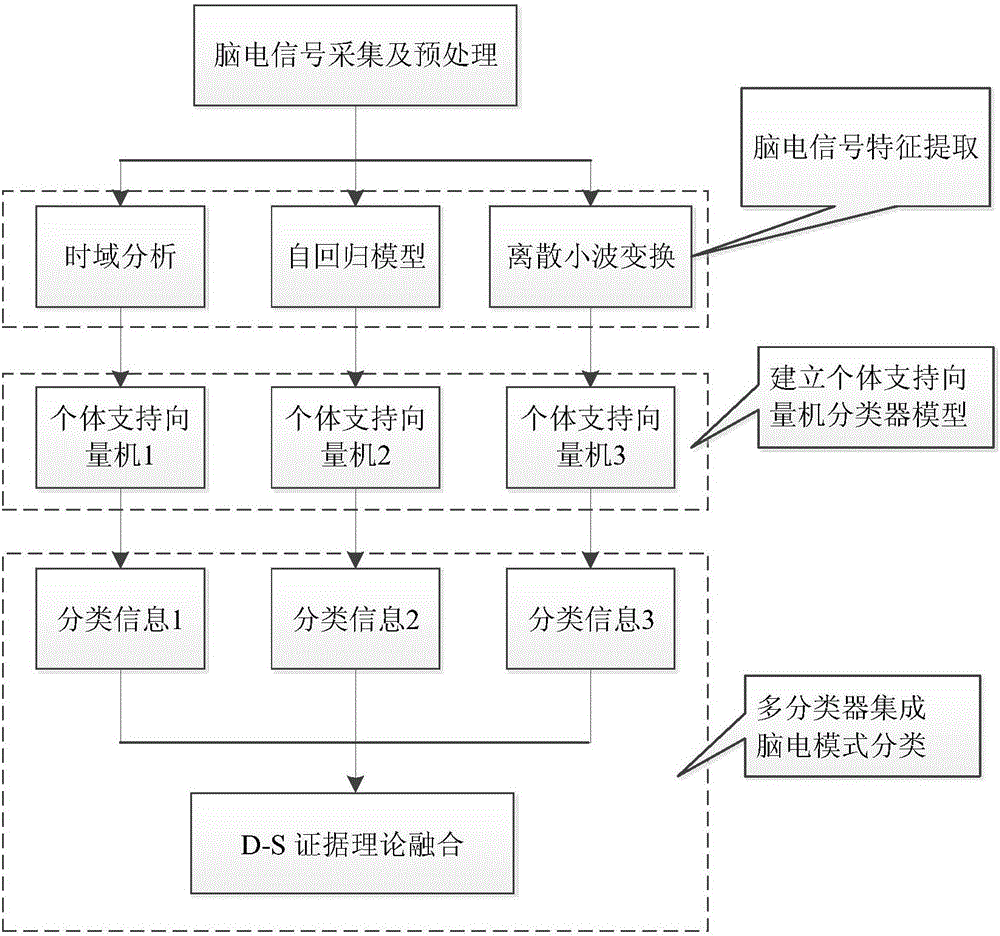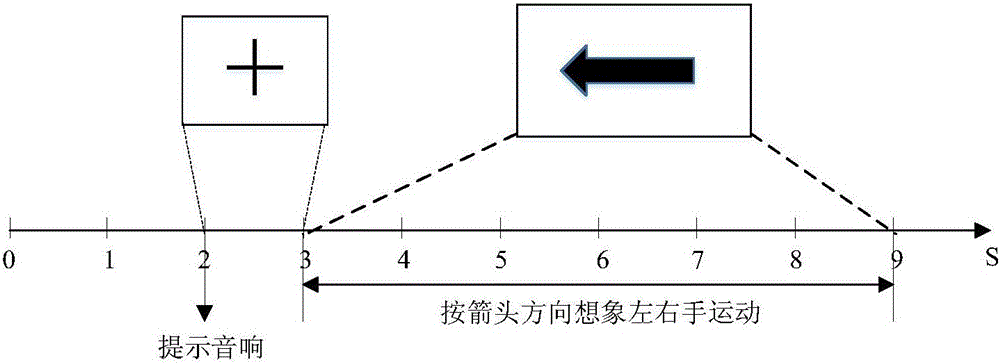Electroencephalogram classification method based on multi-classifier integration
A technology of multi-classifiers and classification methods, which is applied in the direction of instruments, electrical digital data processing, and pattern recognition in signals, etc., which can solve the problems of poor performance and difficulty in improving classification accuracy
- Summary
- Abstract
- Description
- Claims
- Application Information
AI Technical Summary
Problems solved by technology
Method used
Image
Examples
Embodiment Construction
[0062] The present invention will be further described below in conjunction with the accompanying drawings.
[0063] Such as figure 1 Shown is an EEG classification method based on multi-classifier integration, and the specific implementation process is described.
[0064] Step 1: EEG signal acquisition and preprocessing
[0065] The EEG signals in the motor imagery mode of the subject were collected multiple times, and the EEG signals collected each time were processed by band-pass filtering to form a sample, and half of the samples were randomly selected from all samples as the training sample set. The remaining half of the samples are used as the test sample set.
[0066] The motor imagery EEG signals are collected through the electrode leads C3, Cz and C4 on the multi-channel collector, and the EEG electrodes are placed according to the international 10-20 system standard, such as figure 2 As shown, the sampling frequency is 128Hz; since the EEG signal of the Cz channe...
PUM
 Login to View More
Login to View More Abstract
Description
Claims
Application Information
 Login to View More
Login to View More - R&D
- Intellectual Property
- Life Sciences
- Materials
- Tech Scout
- Unparalleled Data Quality
- Higher Quality Content
- 60% Fewer Hallucinations
Browse by: Latest US Patents, China's latest patents, Technical Efficacy Thesaurus, Application Domain, Technology Topic, Popular Technical Reports.
© 2025 PatSnap. All rights reserved.Legal|Privacy policy|Modern Slavery Act Transparency Statement|Sitemap|About US| Contact US: help@patsnap.com



